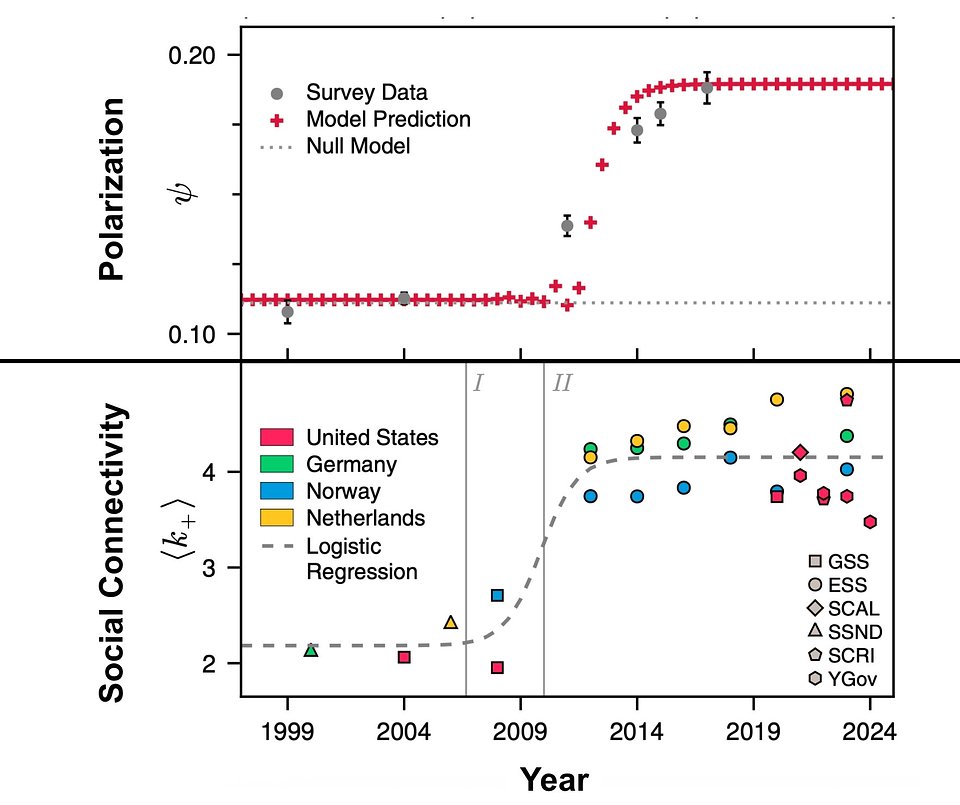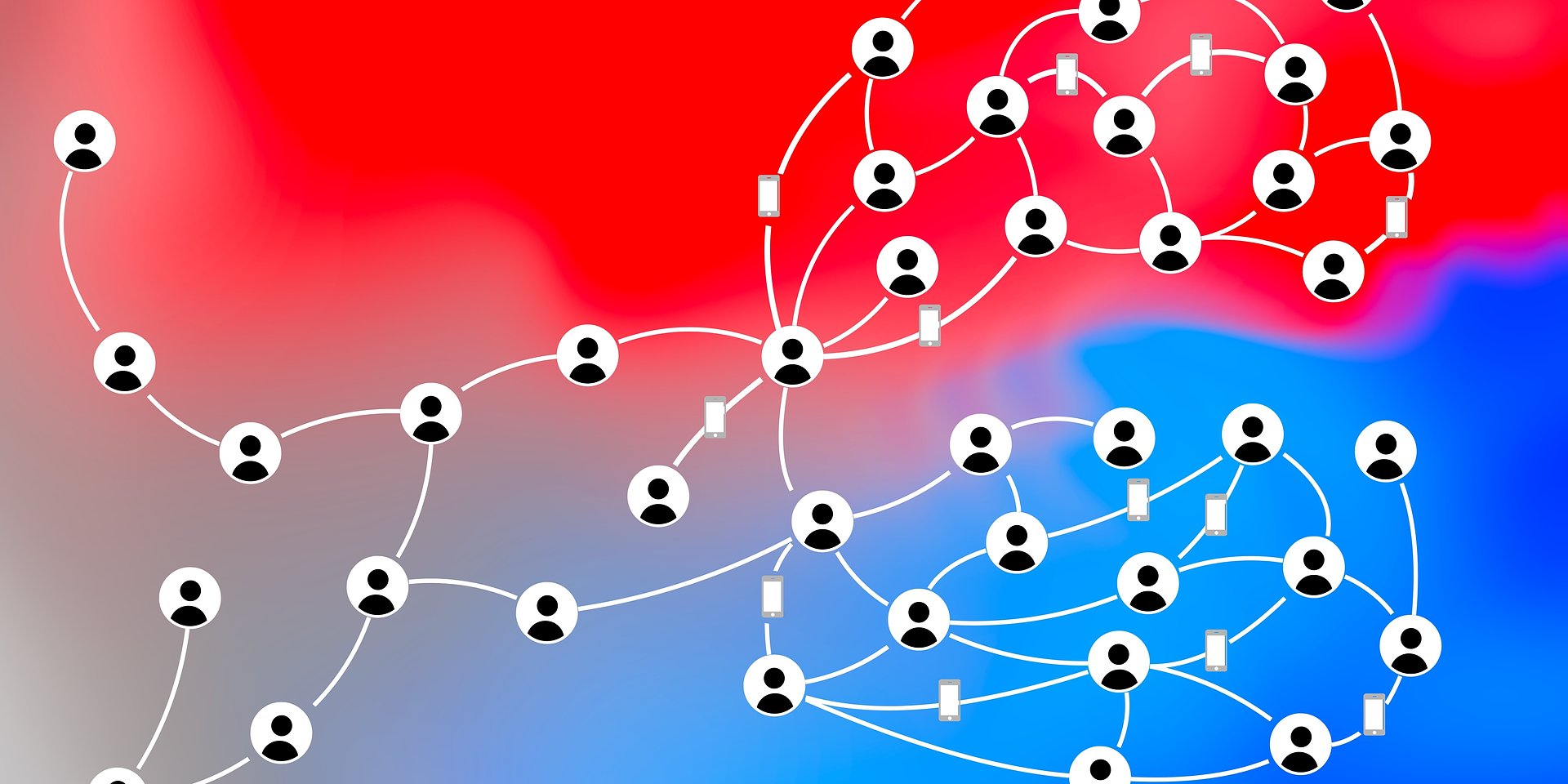Between 2008 and 2010, polarization in society increased dramatically alongside a significant shift in social behavior: the number of close social contacts rose from an average of two to four or five people. The connection between these two developments could provide a fundamental explanation for why societies around the world are increasingly fragmenting into ideological bubbles.
The Friendship Shift: From Two to Five Close Contacts
The Paradox: More Connection, More Division
Behind the Numbers: Tracking Polarization Through Decades of Data

Increase in polarization and social connectivity Top: Gray circles show the survey-based polarization measure over time; the red crosses represent the model prediction. Bottom: Estimated average number of close friends by country and survey. The dashed line shows a logistic regression across all data points. The transition from low to high connectivity occurs shortly after Facebook became publicly accessible (vertical line I – 2006) and overtook other websites in U.S. traffic (vertical line II – 2010).


